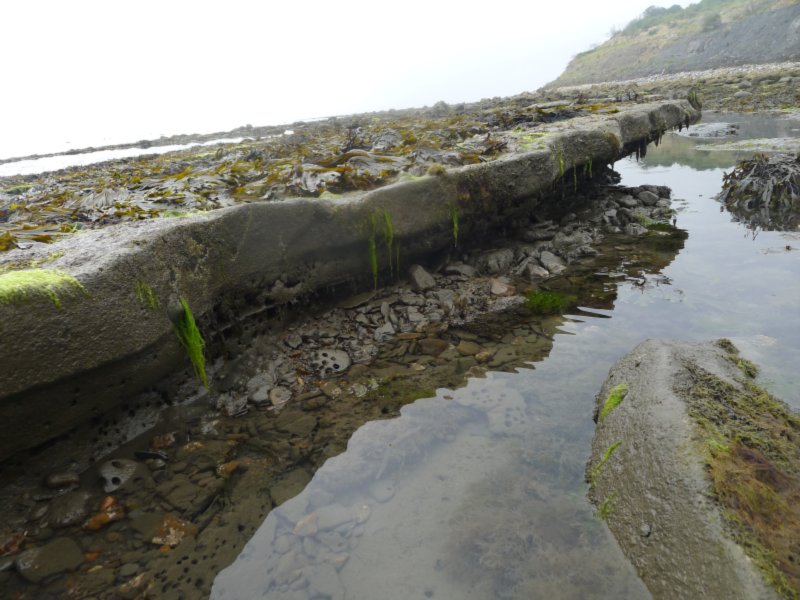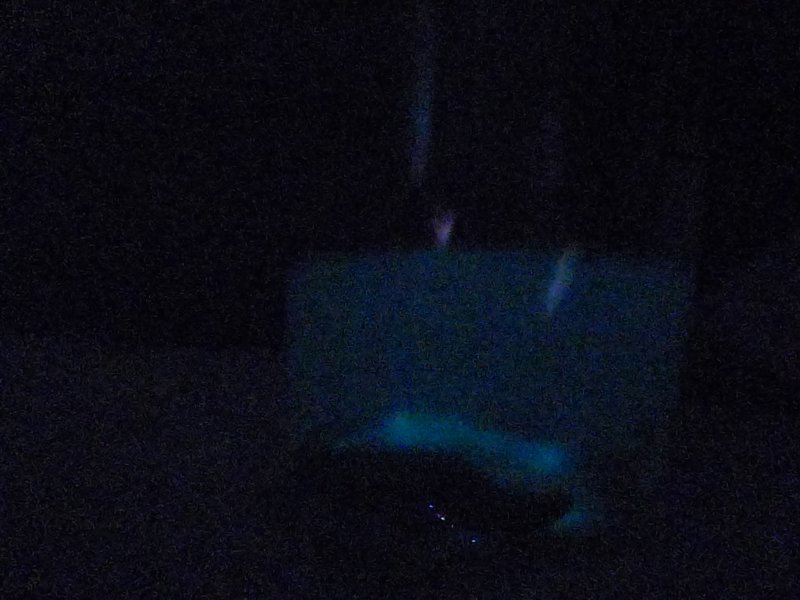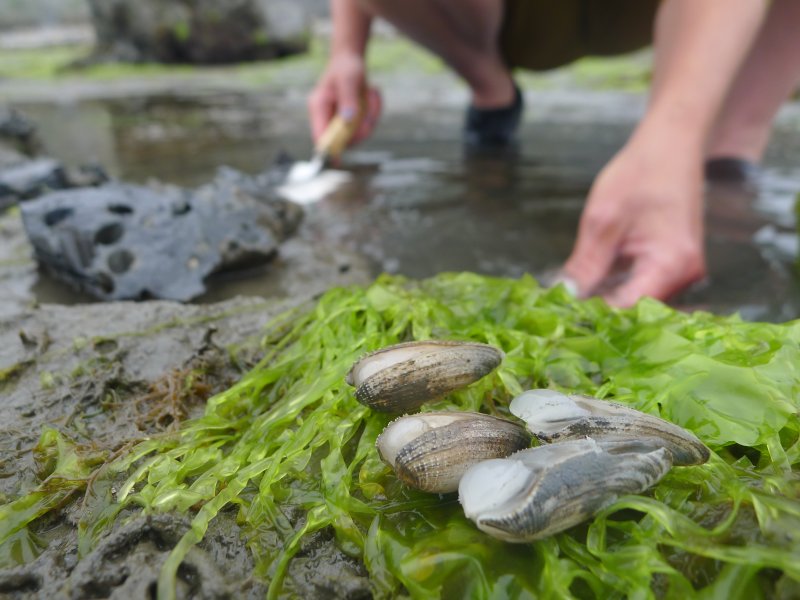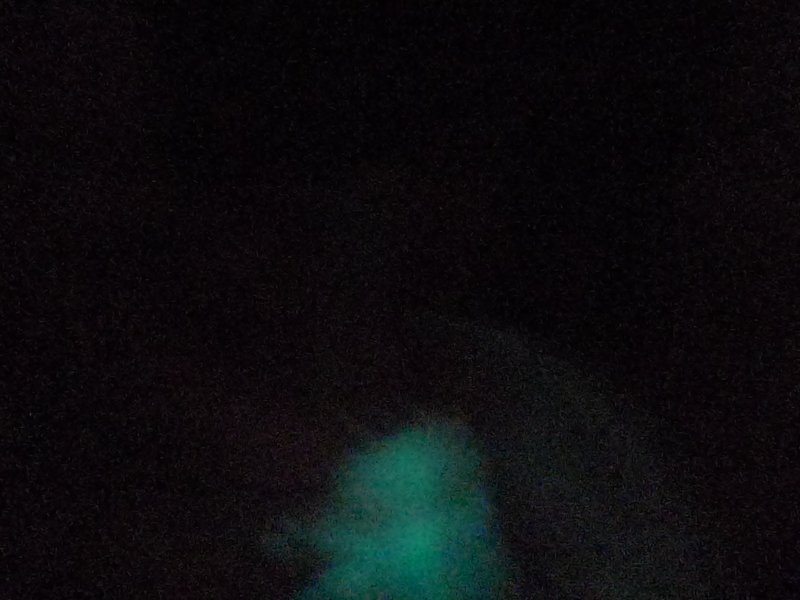The Common Piddock (or Pholas Dactylus) as psychogeophysickal mascot.
It is the nature of these fish to shine in darkness with a bright light when other light is removed, and in proportion to their amount of moisture to glitter both in the mouth of persons masticating them and in their hands, and even on the floor and on their clothes when drops fall from them, making it clear beyond all doubt that their juice possesses a property that we should marvel at even in a solid object.
[Natural History, Volume III, Pliny]
J. Beccaria found that a single piddock “rendered seven ounces of milk so luminous that faces might be distinguished by it”, and another researcher, Costa, wrote that “if the flesh is chewed and held in the mouth, the breath becomes luminous and looks like a real flame”.
[The Edible Mollusks of Great Britain, Lovell, 1878]
Introduction
Inspired by an article on bio-luminescence dug-out from a pile of moulding Scientific American magazines (the mussel was also used in the first research by Raphael Dubois into this general biological phenomena and holds in important place in the scientific understanding of this property), and hoping to further explore the topic of inter-species communication so fruitfully attempted in Ghent (a pair of fungi-filled dark goggles were developed there with various FOAM operatives), we travelled to Lyme Regis in late August 2013 to research the life and times of the boring mollusk otherwise known as the Common Piddock.
Aside from its luminescent qualities, the Common Piddock was considered a delicacy in England until the 19th century, and was commonly eaten around the Atlantic and Mediterranean coasts until over-consumption led to it being placed on the protected list in certain countries.
Our aim was to communicate with this mollusk, which lives entirely within a tiny burrowed hole in rocks or shale, through both taste buds and vision. We also wanted to find out if any psycho-active qualities could be attributed to the experience of eating this supposedly tasty shellfish.
Shells of the Common Piddock have been found during archaelogical digs in the 1970s at the site of a Roman villa by the river Lym (the Holcombe site) and the soft shales around Lyme Regis form a perfect habitat for the Piddock to burrow within. Pebbles bored out with holes by the mollusk, have also been considered as lucky charms and can be found in the South of England and in Cornwall.
After a few days wading through the low-tide waters to the East and West of Lyme, we became acquainted with both habitats and habits of the Common Piddock. Shale and stone ledges extending into the sea are riddled with holes burrowed by the Piddock and associated boring mollusks. Yet there is little evidence of the creature itself, other than the occasional spurt or tiny fountain of water emitted from the odd, uncovered hole on approaching. As we found out later, from Chris Andrew of Lyme Regis museum, who proved immensely helpful in drawing us closer to the Piddock, the Piddock retracts its two feeding siphons when it feels endangered, causing an amount of water to be displaced from the burrow. Following Chris' advice, we searched for broken chunks of muddy shale which would yield up a Piddock for further investigation. On breaking open a suitable chunk, the otherwise hidden world of this extraordinary mollusk was revealed.
With a small sample of Piddocks, wrapped in seaweed and chilled to preserve them, we began to investigate the luminiscent properties of the Pholas Dactylus. The eyes must first become accustomed to total darkness for a few minutes and then the dull greenish blue glow of the opened mollusk becomes apparent. The glow is quite strong, clearly illuminating a glass of water and surroundings, and can last perhaps one day. The blue light offers a window into the world of the Piddock, a creature which spends its whole life in darkness, shunning daylight. Hands glow blue after touching the moist body of the Piddock, and if the raw Piddock is placed in the mouth the tongue and breath also glow blue, as indicated by Pliny in ancient Roman writings about the mollusk. The taste of the raw Piddock is equally as indescribable as this strange luminescence; an extreme chemical taste, perhaps stony or mineral, deep and prehistoric, very far from the usually mild seafood experience. All forms of cooking destroy the luminescence, though the raw Piddock can be preserved by freezing.
The next stage of our research will consider the admittedly long-term farming of the piddock for education and gastronomy, perhaps creating concrete environments which could sit in unpolluted sea waters. We would recommend that the Piddocks of Lyme remain undisturbed, as they have for millions of years, glowing silently in the darkness.
To Pholas
Tunneling sideways slowly into geological time, lifelong lifetime drill and turn of the shell, perhaps only three of four years into softer rock, twenty years into a more resistant substrate. Growing and drilling across and down into the jurassic shale (are these the blue lias?) on both sides of Lyme Regis, shale collapsing from the cliffs into the sea, exposing at low tides massing emptied wormholes, uninhabited, and further out to sea (observable at low spring tides), the now abandoned holes of the Piddock themselves dating back perhaps hundreds of years, further eroded, expose the giant fossils of the ichthyosaur, identified by the way the groups of mollusk will tunnel exactly around the fossil bones and skeleton, preferring to grow slowly through the softer, grey shale; Piddock as geological indicator, a demonstrable judge of substrate density.
Pholas Dactylus, shunning and retreating from light as a reflex, retracting feeding tubes into its winged shell as the shale vibrates, this small movement displacing water at low tide, creating a small spittoon jet which reveals the Piddock's deep burrow. An aversion to light, yet hiding light, a potential evolutionary throwback or remnant, outdating the ichthyosaur, hiding in a deeper time when the action of luminous chemistry would serve to convert life-toxic oxygen into water (that first dog-eared article from December 1962). Raphael Dubois in the late nineteenth century confirmed the devilish dual action of luciferin and luciferase using a hot-water extract of luminous Pholas tissue; a relation with oxygen and oxidisation exploited more recently by the famous Knights. Blue-glowing mouths, open fridge doors, a cold, chemical taste on the lips, in the bedroom, confirm these scientific findings.
Engineering actions to strengthen the sea wall close to Church Cliff have disturbed the mud and silt across the low shales digging into the sea, threatening the sensitive Pholas. Sewage outflow from the nearby river Lyme summons images of a more psycho-active shellfish and landscape; Pholas as lowly and hidden initiator of a Hitchcockian eco-apocalypse. Seagulls pick through the broken and crumbled shale honeycombs now mud silted and blocked, the mollusks suffocated.
Pholas Dactylus as mascot for psychogeologics, for psychogeophysicks and for a new, dark ecology. Hidden relations finding after so many years their fate and expression in Carroll's fragment:
But answer came there none
And this was scarcely odd, because
They'd eaten every one.
[The Walrus and The Carpenter, Lewis Carroll from Through the Looking-Glass and What Alice Found There, 1872]



